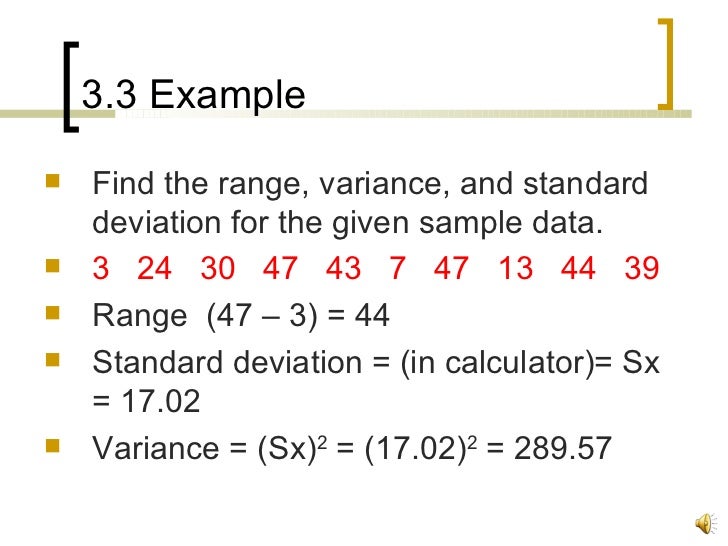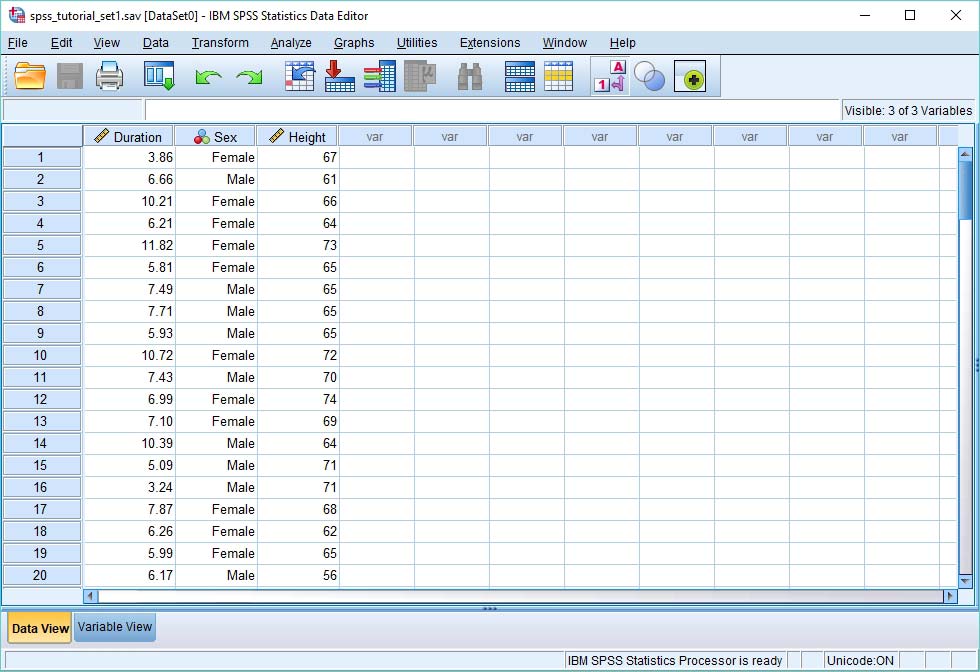The standard deviation (usually abbreviated SD,sd, or just s) of a bunch of numbers tells you how much the individual numbers tend to differ (in either direction) from the mean. It’s calculated as follows:
- Calculate C For Range And Standard Dev Chart
- Calculate C For Range And Standard Dev 2017
- Calculate C For Range And Standard Dev Size
- Standard Dev Formula

Mar 12, 2012 This video will teach you and give you examples how to find the range, variance and standard deviation. Please visit our website www.i-hate-math.com for videos. The ratio of sample range ($ max(x) - min(x)$) to sample standard deviation is sometimes call the studentized range. So if the middle of the distribution of studentized range was 3, it could make sense to approximate the sample standard deviation from the range by dividing the range by 3. S = std(A,w,vecdim) computes the standard deviation over the dimensions specified in the vector vecdim when w is 0 or 1. For example, if A is a matrix, then std(A,0,1 2) computes the standard deviation over all elements in A, since every element of a matrix is contained in the array slice defined. Given the outliers, you might find the interquartile range to be more useful than the standard deviation. This is simple to calculate: just sort the numbers and find the difference of the values at the 75th percentile and the 25th percentile. This post discusses range and standard deviation as two ways to describe patterns in data. It also goes into how to calculate and interpret range and standard deviation using real data sets. In statistics, there are numerous terms that help describe your data. Z Score Calculator. This simple calculator allows you to calculate a standardized z-score for any raw value of X. Just enter your raw score, population mean and standard deviation, and hit 'Calculate Z'. Note: If you already know the value of z, and want to calculate p, this calculator will do the job.

This formula is saying that you calculate the standard deviation of a set of N numbers (Xi) by subtracting the mean from each value to get the deviation (di) of each value from the mean, squaring each of these deviations, adding up the
terms, dividing by N – 1, and then taking the square root.
Calculate C For Range And Standard Dev Chart
This is almost identical to the formula for the root-mean-square deviation of the points from the mean, except that it has N – 1 in the denominator instead of N. This difference occurs because the sample mean is used as an approximation of the true population mean (which you don’t know). If the true mean were available to use, the denominator would be N.
When talking about population distributions, the SD describes the width of the distribution curve. The figure shows three normal distributions. They all have a mean of zero, but they have different standard deviations and, therefore, different widths. Each distribution curve has a total area of exactly 1.0, so the peak height is smaller when the SD is larger.
For an IQ example (84, 84, 89, 91, 110, 114, and 116) where the mean is 98.3, you calculate the SD as follows:
Calculate C For Range And Standard Dev 2017
Standard deviations are very sensitive to extreme values (outliers) in the data. For example, if the highest value in the IQ dataset had been 150 instead of 116, the SD would have gone up from 14.4 to 23.9.
Calculate C For Range And Standard Dev Size
Several other useful measures of dispersion are related to the SD:
Standard Dev Formula
Variance: The variance is just the square of the SD. For the IQ example, the variance = 14.42 = 207.36.
Coefficient of variation: The coefficient of variation (CV) is the SD divided by the mean. For the IQ example, CV = 14.4/98.3 = 0.1465, or 14.65 percent.
Comments are closed.